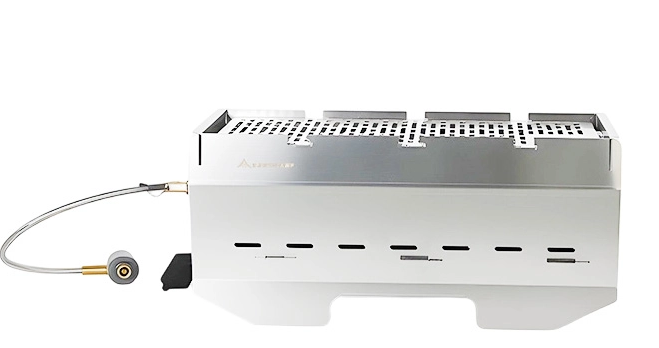Essential Maintenance Tips to Maximize the Lifespan of Automotive Board-to-Board Connectors
Introduction: Why Maintenance Matters
In today’s automotive world, electronics control everything from engine management to infotainment systems. Board-to-board connectors are the critical link between printed circuit boards (PCBs), ensuring reliable electrical signals. Without proper maintenance, these connectors can fail, leading to costly repairs, system downtime, or even safety hazards.
Junhong Signal Equipment (KUJUN), a leading manufacturer in Shenzhen, specializes in automotive board-to-board connectors, offering high-quality solutions with automated assembly, precision punching, and rigorous quality control. This guide explores essential maintenance practices from all angles, ensuring maximum reliability and lifespan for your automotive connectors.
1. Understanding Automotive Board-to-Board Connectors
Board-to-board connectors transmit signals and power between PCBs in automotive systems. Key points include:
-
Types: Vertical, right-angle, mezzanine, high-speed connectors
-
Material & Plating: Copper alloys, gold or tin plating for corrosion resistance and optimal conductivity
-
Applications: Engine control units, infotainment, ADAS (Advanced Driver Assistance Systems), sensor modules, LED lighting
-
Environmental Challenges: Temperature variations, vibration, humidity, dust, and exposure to automotive fluids
KUJUN connectors are engineered for high durability under these harsh automotive conditions, ensuring stable signal transmission and long service life.
2. Choosing the Right Connector for Your Vehicle
Selecting the correct connector is crucial for performance and longevity:
-
Compatibility: Ensure connector matches PCB layout and electrical specifications
-
Current and Voltage Ratings: Avoid exceeding rated specifications to prevent overheating
-
Signal Integrity: High-speed connectors must support proper impedance and minimize crosstalk
-
Mechanical Design: Locking mechanisms and vibration tolerance reduce wear
High-quality KUJUN connectors provide precise tolerances, reliable locking, and robust mechanical strength, making them suitable for modern automotive electronics.
3. Installation Best Practices
Improper installation can shorten connector lifespan. Follow these expert tips:
-
Alignment: Align boards carefully to prevent pin bending or misalignment
-
Insertion Force: Apply manufacturer-recommended force; excessive force damages contacts
-
Mounting: Secure PCBs to minimize vibration-induced stress
-
Environmental Sealing: Use protective covers or conformal coating in exposed environments
Pro Tip: Avoid metal objects or debris in contact areas during installation to maintain optimal conductivity.
4. Daily Maintenance and Cleaning
Routine maintenance ensures connectors remain in top condition:
-
Visual Inspection: Look for bent pins, corrosion, discoloration, or contamination
-
Electrical Testing: Check continuity and resistance regularly
-
Cleaning: Use isopropyl alcohol and lint-free cloths; avoid harsh chemicals
-
Seating Check: Ensure connectors remain fully engaged
Regular inspections prevent minor issues from becoming major failures.
5. Avoiding Common Maintenance Mistakes
Frequent mistakes can reduce connector lifespan:
-
Pulling connectors at an angle or using excessive force
-
Ignoring environmental exposure like moisture, dust, and automotive fluids
-
Overloading connectors beyond rated current
-
Neglecting vibration effects in high-movement areas
KUJUN connectors are designed with locking features and robust construction to mitigate these risks, but proper handling is essential.
6. Advanced Maintenance Strategies
To maximize lifespan and performance:
-
Temperature Management: Monitor thermal cycles to avoid exceeding connector ratings
-
Load Management: Ensure electrical loads are within specifications
-
Firmware and Software Checks: For high-speed data connectors, ensure firmware supports optimal signal transmission
-
Maintenance Logs: Track inspections, cleanings, and replacements for predictive maintenance
These practices help engineers anticipate issues and plan preventive actions.
7. Troubleshooting Common Issues
Common connector issues and solutions:
-
Intermittent Connection: Caused by loose mating or contamination; reseat and clean connectors
-
High Contact Resistance: Indicates wear or corrosion; replace affected parts
-
Signal Degradation: Inspect for bent pins, poor alignment, or EMI interference
KUJUN’s rigorous quality testing minimizes these failures, providing reliable and consistent performance.
8. Optimizing Automotive Electronics with Connectors
Well-maintained connectors enhance automotive system design:
-
High-Speed Signal Integrity: Critical for infotainment, sensors, and safety systems
-
Compact Layouts: Supports modular PCB design and space-saving solutions
-
Repair and Upgrade Efficiency: Easy-to-use connectors reduce labor and downtime
KUJUN connectors’ precision and durability allow engineers to design advanced automotive electronics with confidence.
9. Real-World Applications and User Experience
In practical applications:
-
Infotainment Systems: Multi-board assemblies rely on high-speed connectors
-
ADAS Modules: Safety-critical systems require connectors with high reliability
-
LED Lighting Modules: Vibration-resistant connectors ensure consistent performance
-
Electric Vehicles: High-power and signal connectors are essential for battery management and drive systems
Users report reduced failures, easier maintenance, and longer system life when using KUJUN connectors.
10. Future Trends in Automotive Connector Maintenance
Automotive electronics are evolving, requiring connectors to:
-
Support higher data rates and advanced safety features
-
Integrate with smart diagnostics for predictive maintenance
-
Withstand more extreme environmental conditions in EVs and autonomous vehicles
Staying updated with connector technology and proper maintenance practices ensures vehicles remain reliable and efficient.
11. FAQ: Automotive Board-to-Board Connector Maintenance
-
Q: How often should connectors be inspected?
A: Every 12 months or 20,000–30,000 km, depending on vehicle type and usage. -
Q: Are KUJUN connectors suitable for high-speed automotive circuits?
A: Yes, they are designed for both high-speed signal integrity and mechanical reliability. -
Q: What cleaning methods are safe?
A: Use isopropyl alcohol and lint-free cloths; avoid abrasive or corrosive chemicals. -
Q: How to prevent vibration-induced failures?
A: Use connectors with locking mechanisms and secure PCB mounting. -
Q: Can one connector type be used across multiple systems?
A: KUJUN connectors are versatile but always check compatibility for voltage, current, and mechanical fit.
Conclusion
Proper maintenance of automotive board-to-board connectors is critical for vehicle electronics reliability. By following these essential tips—covering installation, cleaning, inspection, troubleshooting, and advanced strategies—you can maximize connector lifespan, reduce failures, and optimize vehicle performance.
Choosing KUJUN connectors ensures you have high-quality, precision-engineered components capable of withstanding harsh automotive environments, making maintenance easier and more effective.
www.kujunconnector.com
Nanjing Junhong Signal Equipment Co., Ltd.

Average Rating